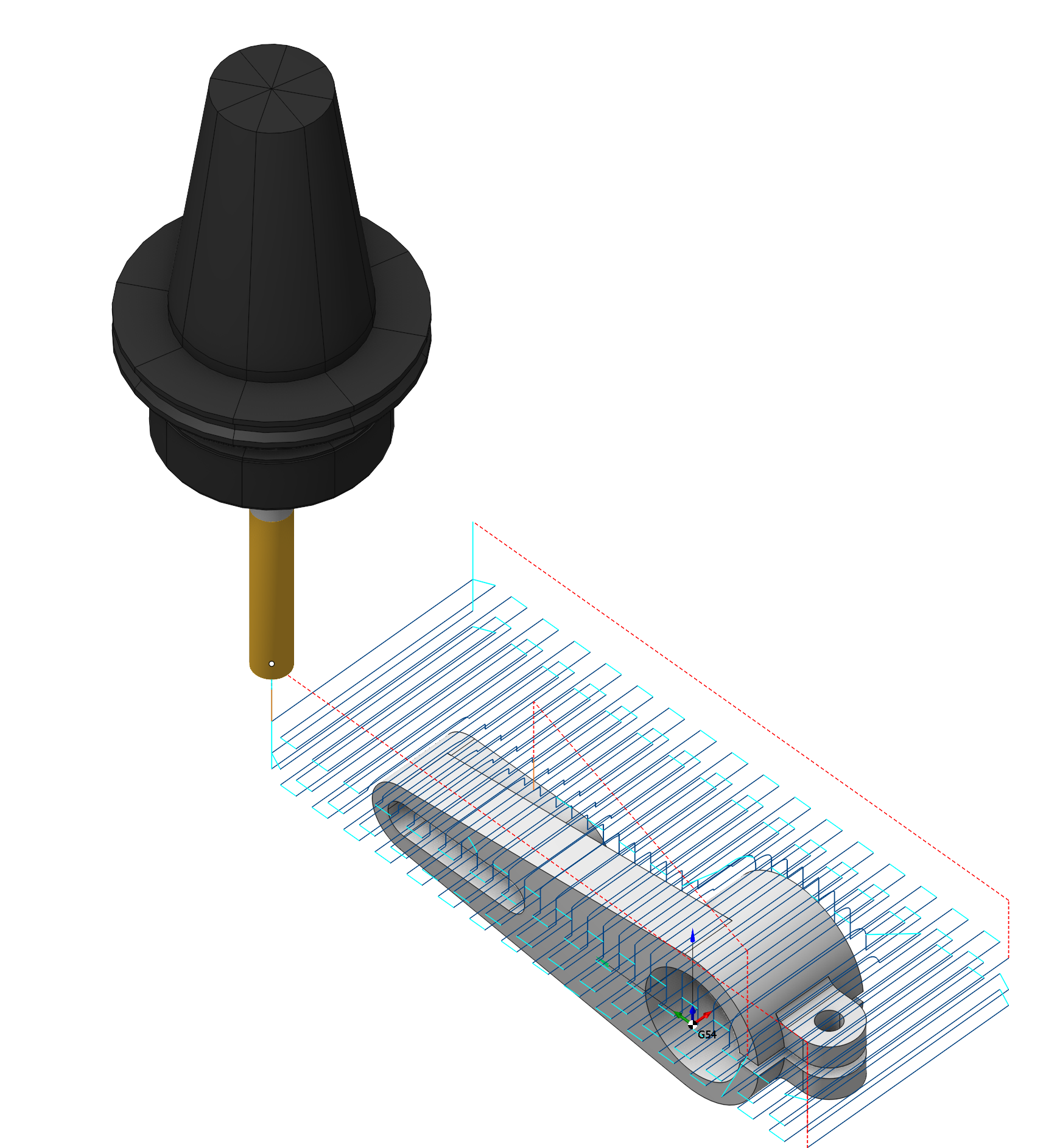Plane roughing operation

Application area:
The machining results of the plane roughing operation are usually closer to the source model when compared to the waterline strategy using similar parameters. This operation is used for machining models with significant differences to the defined workpiece model prior to rough machining, and for milling soft materials.
Setup:
The Setup tab is used to configure the primary parameters of the project. This can involve the positioning of the part on the equipment, the coordinate system of the part, and more. See more
Job assignment:
Faces. Select various surfaces of the part as the working task. The system will calculate the trajectory based on the chosen surfaces.
Pocket. A typical prismatic or turn-milling part consists of many simple shapes.To simplify this task, we can recognize the parts elements in a 3d model and automatically convert them to basic job assignment items, such as job zones and machining levels. See more
Job Zone. Job zones are used to define the part areas that have to be machined by roughing and finishing milling operations. See more
Restrict Zone. In addition to Job Zones in system you can use Restrict Zones to specify the workpiece areas that have not to be machined in the current operation. See more
Top Level. Specifying the top level by model elements. See more
Bottom Level. Specifying the bottom level by model elements. See more
Properties. Displays the properties of an element. It is possible to add the stock. You can also call this menu by double clicking on an item in the list.
Delete. Removes an item from the list.
Strategy:
Step.
The maximum allowed width of cut. This parameter group works similarly to the Plane finishing operation. See more
Depth of cut.
Material removed in one pass along the tool axis between the Top and Bottom levels.
Machining levels.
It defines the range along tool axis for the machining. This parameter group works similarly to the Waterline roughing operation. See more
Milling type
Сan be assigned in almost all operations, except for the curve machining operations. This allows the user to control the required milling type (climb or conventional) during the toolpath calculation process. This parameter group works similarly to the Waterline roughing operation. See more
Corners smoothing.
When there is a sudden change of the tool direction, the milling control performs deceleration before starting the turn, and then accelerates again. This fact can lead to vibrations and high tool and milling machine wear. The problem can be solved if the toolpath has very few or no breaks. For this reason, in the system there is the toolpath smoothing function using the defined radius for machining inner or outer corners of the model.
Trimming.
Allows for the skipping of surfaces not intended for machining and allows for the extension of the toolpath . Some parameter group works similarly to the Plane finishing operation. See more
Transformations:
Parameter's kit of operation, which allow to execute converting of coordinates for calculated within operation the trajectory of the tool. See more
See also:
Operations for the 3-axes milling